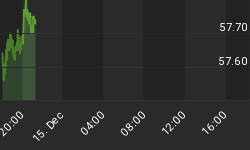Adapting to Systemic Dysfunction (part IV)
In part one of this series, we sought to align attributes of the trading and investment process with those of gambling and speculation. We further posited that trading amidst unpredictable and sudden market swings was no different now than it has been throughout any other period in market history.
In part II, we explored how we chart a course in real time, and revealed precisely where we believe the Dow resides in Elliott Wave terms.
In part-III titled "Batter Up", we will explored the analysts (optional) role in providing contextual guidance relative to specific trading and investment objectives commonly held by those trading from the information contained in such works.
In the last of this series, we shall briefly explore the merits of automating a learned set of proven trading disciplines.
Systems Trading vs. Discretionary Trading
Whether it is automated or discretionary, any systematic/adaptive/anticipatory trading discipline that harbors a quantified statistical edge to win is far superior to any other method of trading/investing PERIOD.
Successful disciplines of this type typically spawn from various components of technical analysis in concert with ancillary contingency factors such as currency values, and yes, empirically accurate vs. hedonic sets of leading economic indicators.
Elliott Wave Technology stepping it up a notch with automated R&D
Recognizing that even the most consistent and adept discretionary traders are subject to fall victim of the inescapable human emotion inherent in trading, we have successfully completed a first round of beta-coding for most of our proprietary trading methodologies.
Our recent sabbatical in writing articles has been a result of working extensively with high-level programmers in coding our rules-based trading methodologies into the automated TradeStation platform.
Below is the most recent quantified performance of our automated rules-based trading system at Level-V. Six trades, all of which were winners, produced $7,800 in Dow Futures profits for each two contracts traded. Not bad work if you can get it.

To say that we are quite pleased with the beta results thus far would be a gross understatement. Buy or Sell into the August close? Short-term, it looks like a sell.
As you may already know, Elliott Wave Technology provides market guidance and technical analysis at five distinct levels of engagement. In simplifying the delivery of such guidance, we have recently upgraded each of our premium services to a screen cast video format. We have received nothing but thumbs-up reviews to this new format.
Levels I and II are longer-term in nature and have been engineered to capture the lion's share of Elliott Wave price movements at the Primary and Intermediate Degrees of trend. One may monitor these two long-term levels of engagement with subscription to our Position Traders Perspective screen cast publication.
Level III is a medium-term level of engagement; we have coded this system to capture the lion's share of Elliott Wave price movements at the Minor and Intermediate Degrees of trend. One can monitor the position of this system in our Near Term Outlook screen cast publication.
Unfortunately, we have closed Level-V to new subscription until further notice however; the Near Outlook includes a regular menu of powerful short-term Level-IV trade set-ups. We'll keep you posted from time to time as our work continues to develop.
Until then,
Trade Better/Invest Smarter















